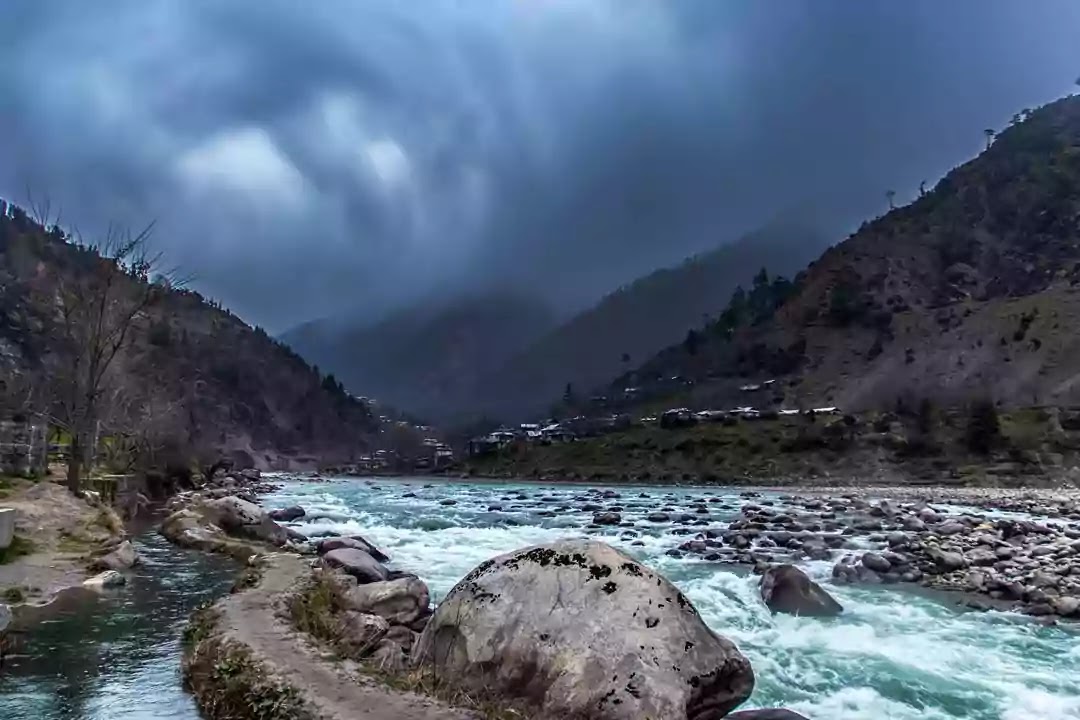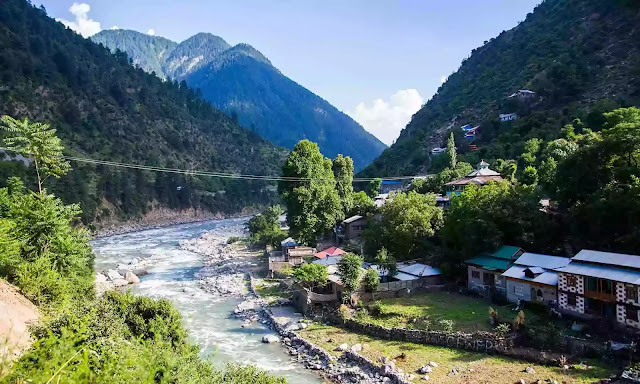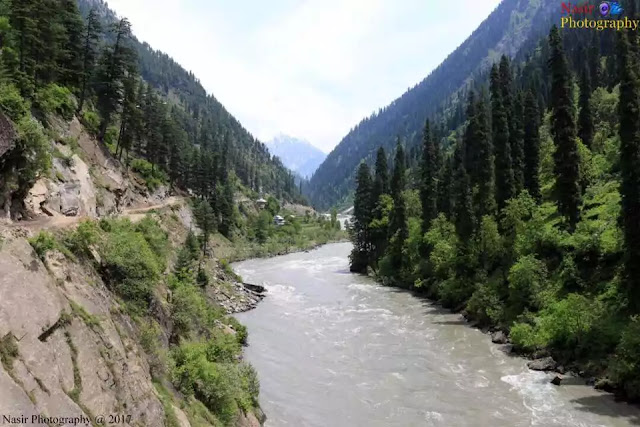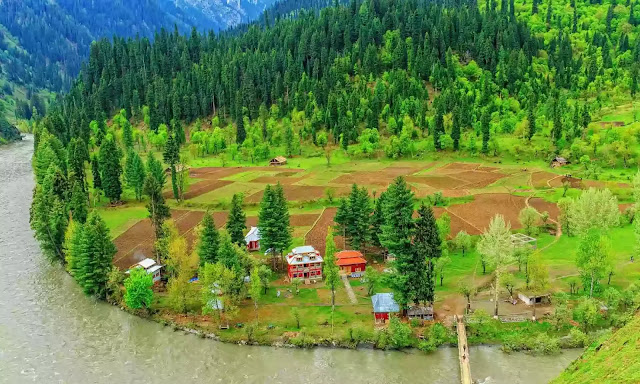Neelum River, Muzaffarabad
The Neelum river of Muzaffarabad in Azad Kashmir originates from the north of the Indian Occupied Kashmir named Kishanganga river in that area. It enters Pakistan administrated Kashmir from Gurez valley and flows parallel to the Line of Control towards Muzaffarabad and then consequences into Jhelum river, that area is known as Domail.
This river is a big reason for the beauty of the Neelum Valley and plays a role as a natural line of control between Indian and Pakistani Kashmir. Between the high lush green and full of tall trees mountains, it adds immense beautiful views to the scenery.
The noise of hitting big rocks along its way the river increases the wonder of tourists. And its bluish water is nature's gift which has been given to this region by nature.

Origin of the Neelum river
There are two lakes in district Gandewal of the north of Indian area of Kashmir at the foot of Sonamarg mountains named "Krishna-Sar" and "Vishna-Sar" that Neelum river originates from. The water of these two lakes reaches Badoab village in Tulail valley where another Nallah coming from Daras mountains merges with it and becomes a mighty river.
Some more small springs merge with it on their way along with Burji Nallah which is coming from Astore Valley of Gilgit Baltistan in Pakistan. As soon as it enters Pakistani administrated Azad Kashmir it calls as Neelum river, recommended by Syed Muhammad Amin in 1956.
How is it named?
The Neelum river is known as the Kishanganga river traditionally and is still known as the same in India but after partition in 1947, the river was renamed as Neelum river in 1956 in Pakistan.
It is named Kishanganga river in Indian Occupied Kashmir for its Kishansar Lake, and the name Kishanganga is a combination of two words i.e., "Kishan" and "Ganga".
Word "Kishan" means dark and "Ganga" means flowing or moving in the Sanskrit language so the river Kishanganga means flowing blackwater river.
In ancient times this river was the Krishna-Ganga river, and with the passage of time, its name transform to the Kishanganga river.
See also:
Ratti Gali Lake Neelum Valley, AJK Pakistan
Dhani Waterfall Muzaffarabad, AJK
Places to visit in Muzaffarabad, Pakistan
Why is Neelum called Neelum?
Neelum valley got its name from the river Neelum due to the bluish water that flows in it, and Neelum river is named after precious sapphire as sapphire means "Neelum" in the Urdu language.

Aquatic life in Neelum river
There are a large number of different kinds of fish found in the Neelum river that attract tourists from far and wide areas of the country. Although it is prohibited to fish in some parts of the Neelum river, but tourists fish here in Pakistani territory where it is not prohibited. Some famous fish found in the river Neelum are
- Brown trout (Salmo trutta)
- Rainbow trout (Oncorhynchus mykiss)
- Snow trout (Schizothorax plagiostomus)
- Shuddgurn
Which river flows in Muzaffarabad?
In Muzaffarabad, the capital and amazing city of Azad Kashmir Jhelum river receives Neelum river at Domail point and moves southwards.

Kishanganga hydro-power project
In the area of Indian un-law-full possession, India has constructed a hydro-power project of 330 megawatts named the Kishanganga hydropower project. It is an unlawful act done by India that violates the Indus waters treaty and Pakistan has pursued formal arbitration proceedings against India over the matter.
Neelum-Jhelum hydropower project
Pakistan has constructed the Neelum-Jhelum hydropower project in 2018 that has the capacity to produce 969 MW, and it will produce 5150 GWh per year.

How many rivers are there in Muzaffarabad?
Basically, there is one river that goes across and flows in Muzaffarabad named the Jhelum river, and river Neelum consequences into it which is coming from The Neelum Valley. Moreover, the Kunhar river joins the Jhelum river 10 km from Muzaffarabad in Rarah area.
Length of the Neelum river
From its origin in Neelum valley, its length is about 195 km however its total length is about 245 km so the remaining 50 km of it is in Indian occupied Kashmir.
All along its journey when it reaches Chilehana village in Pakistani territory and Teetwal sector of IOK it becomes a natural Line of Control between one nation of two countries where India has occupied aggressively and un-law-fully.

Why is Neelum Valley famous?
Neelum valley is famous for beautiful places and things to do here like hiking, trekking, lakes, waterfalls, meadows, pastures, a healthy and calm atmosphere, lush green high mountains loaded with tall trees, and most importantly the noisy Neelum river.
Which river is known as the Neelum river?
Kishanganga or Krishan-Ganga is known as the Neelum river that originates from Krishna-Sar Lake in Sonamarg mountains, in Indian occupied Kashmir.
River Neelum photo gallery





Conclusion
Undoubtedly, rivers are a great gift from nature to humanity and living beings, and the Neelum river that falls and flows Jhelum river in Muzaffarabad and was originated from Indian occupied Kashmir as Kishanganga river is exemplary to it. We should save water for our generations to come.
